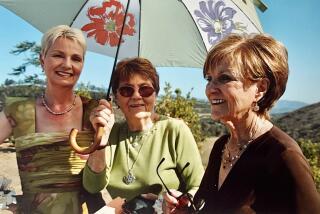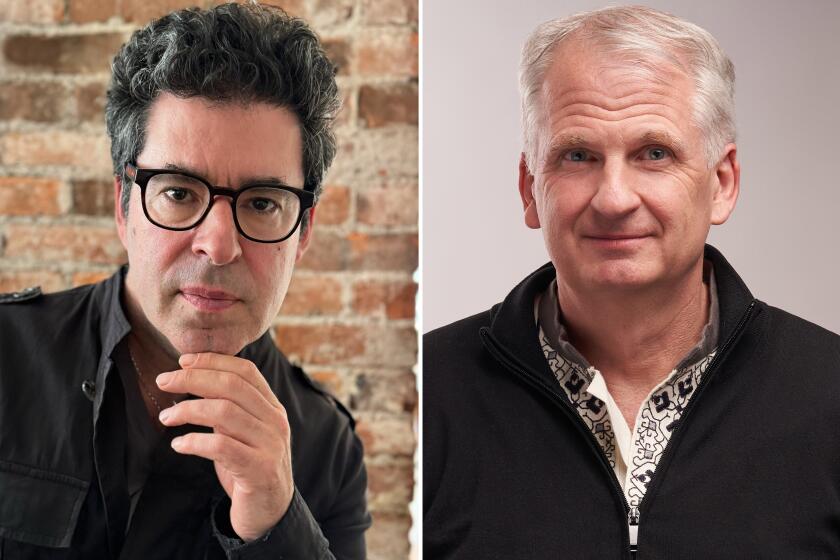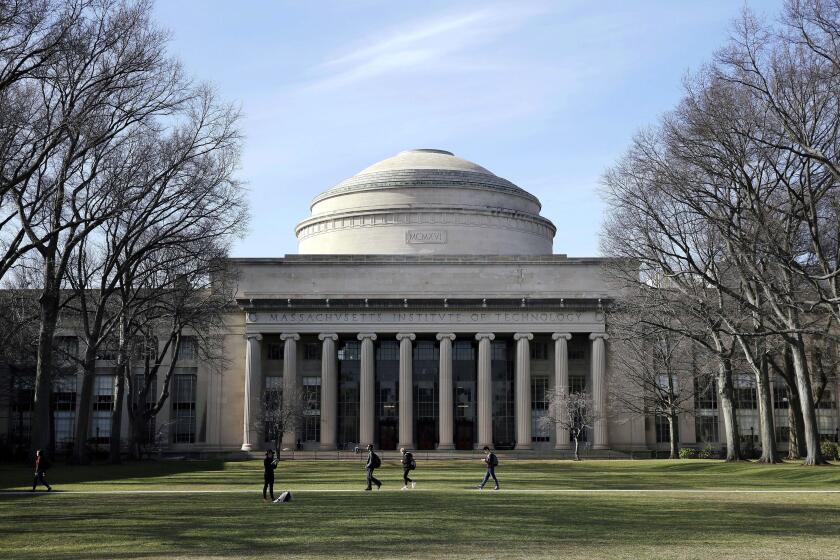Op-Ed: Why was this Seder different from all other seders?
My mother said, “Don’t forget to defrost the brisket,” and closed her eyes.
Those turned out to be her last coherent words, uttered on the eve of Passover, in the throes of hospice-administered morphine, in the final hours of a very full life.
These six words tell you almost all you need to know about my mother.
If it hadn’t been Passover, I think she would have let the brisket go. She had made it a few weeks earlier, slow-cooked in RC Cola, a recipe that will not be unfamiliar to her peers: Reform Jewish women of the Greatest Generation.
She often cooked the brisket well before the holiday so she could cross something off her list. That year she made it despite being just weeks away from death, the colon cancer none of us knew about already having spread.
My mother was born in Cleveland in 1931 just as Reform Judaism was starting to boom. Its flexibility appealed to a generation escaping the rigid practices of their immigrant parents. My mother’s family, though, was Reform Jewish from way back. Her father’s family changed their name from Wolinsky to West, and her mother grew up without having to separate milk from meat.
My mother was not just the sum of her flesh-and-bone parts. She was also made of something stronger.
Jewish life was the life for my mother, and if that meant she had to put up with a bit of religion, she would. She loved the rhythms and traditions of Judaism, all the occasions that required her to gather her family together. About God and the Torah, she was neutral. She suffered through the High Holidays, ignored Sukkot and T’bishvat and baked her way through Hanukkah and Purim. She did, however, go all in for Passover. A Seder for 20 or more every year.
Putting on a proper Seder is not a feat for the faint of heart. You cook for days. You put out every dish you own. And then you spend most of the eight-day holiday cleaning up.
Twelve days before Passover in 2008, my mother called and asked if I could drop her off some ibuprofen. When I found her napping at 6:15 p.m., I knew something was wrong.
My mother was not just the sum of her flesh-and-bone parts. She was also made of something stronger, a will that resisted stress and made a mockery of cancer. That was the conclusion of the oncologist who tried to explain how she could have possibly hidden stage 4 cancer from all of us for so long.
We had detected a slight decline of energy, abnormal for her but certainly not unusual for a 76-year-old woman. She was staying up till midnight instead of 2 a.m. She was occasionally saying words we had never heard from her before: “I’m tired.” And she was eating less, claiming to be on a diet.
She must have known, but she didn’t want to stop doing the things she loved. She also wasn’t crazy about doctors, once going 30 years between appointments.
And so we did what we had to do: We defrosted the brisket.
Then we gathered around her bed, her two grown sons, our wives and her seven grandchildren, ages 11 to 23. Around 2 a.m. she stopped breathing. She was in her own room in her own home, where company would be arriving for the Seder dinner in 15 hours. A few days earlier, we had called the guests and told them the Seder must go on. That’s what my mother wanted. We assumed she’d still be alive.
I’d made the chicken soup ahead. We mixed the matzoh, boiled the eggs, roasted the chicken, cut the parsley, put out bowls of salt water and set the table.
In between all the chopping and boiling, we called the funeral home and all 600 of her friends. I’m not exaggerating. More than 700 people would attend her funeral two days later.
In my mother’s kitchen my brother worked the Rolodex for a half hour or so and then my sister-in-law took a turn while he made the charoset (the apple/walnut mixture that represents the mortar the Jewish slaves used to build the pyramids). My wife peeled the hard-boiled eggs and polished the silver, too emotional to take a turn on the phones. The kids stayed close all day, telling Grandma stories.
It was the perfect way to spend that day.
The Seder dinner is an oral history lesson, with props. Jews all over the world are instructed to tell their children the story of our ancestors’ exodus from Egypt. We dip our finger in wine 10 times as we retell the 10 plagues God visited on the Egyptians. The wine is red and meant to remind us that blood was spilled. We dip parsley in salt water, which represents tears. We eat bitter herbs (horseradish) to remind us of the bitterness of slavery.
That night in my mother’s dining room, we told her story, too. It was like Passover itself, a story told by survivors lucky enough to have had an ancestor who did amazing things so that we might thrive.
Jim Sollisch is the creative director at a Cleveland ad agency.
Follow the Opinion section on Twitter @latimesopinionand Facebook
More to Read
A cure for the common opinion
Get thought-provoking perspectives with our weekly newsletter.
You may occasionally receive promotional content from the Los Angeles Times.










